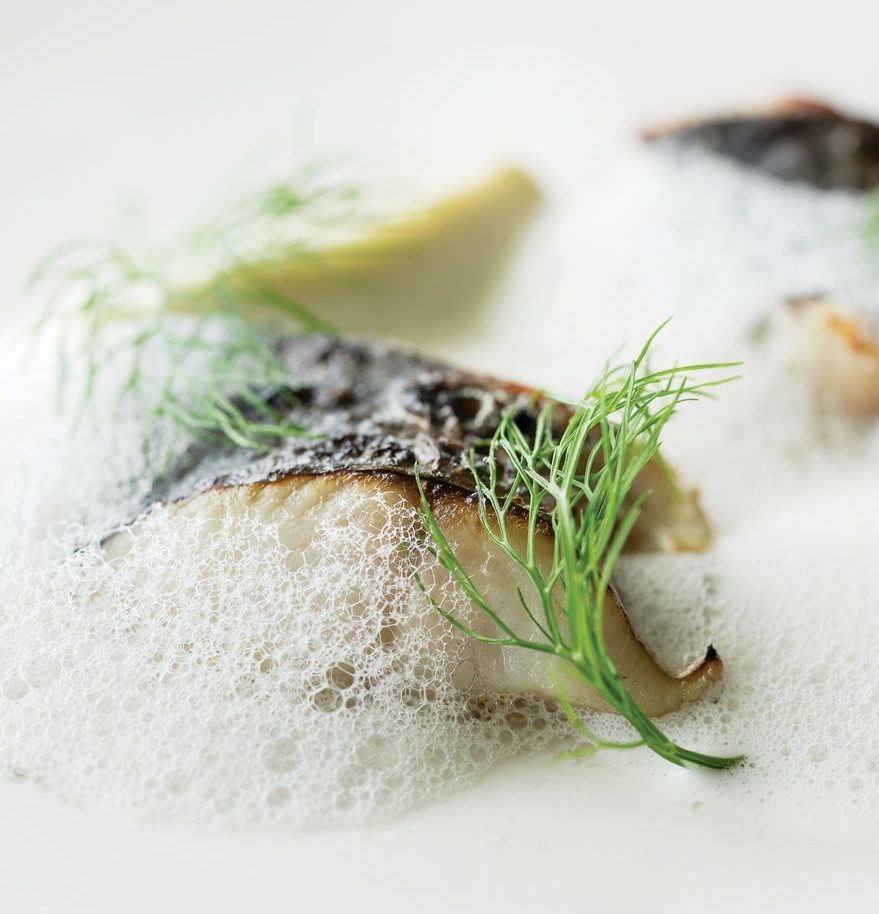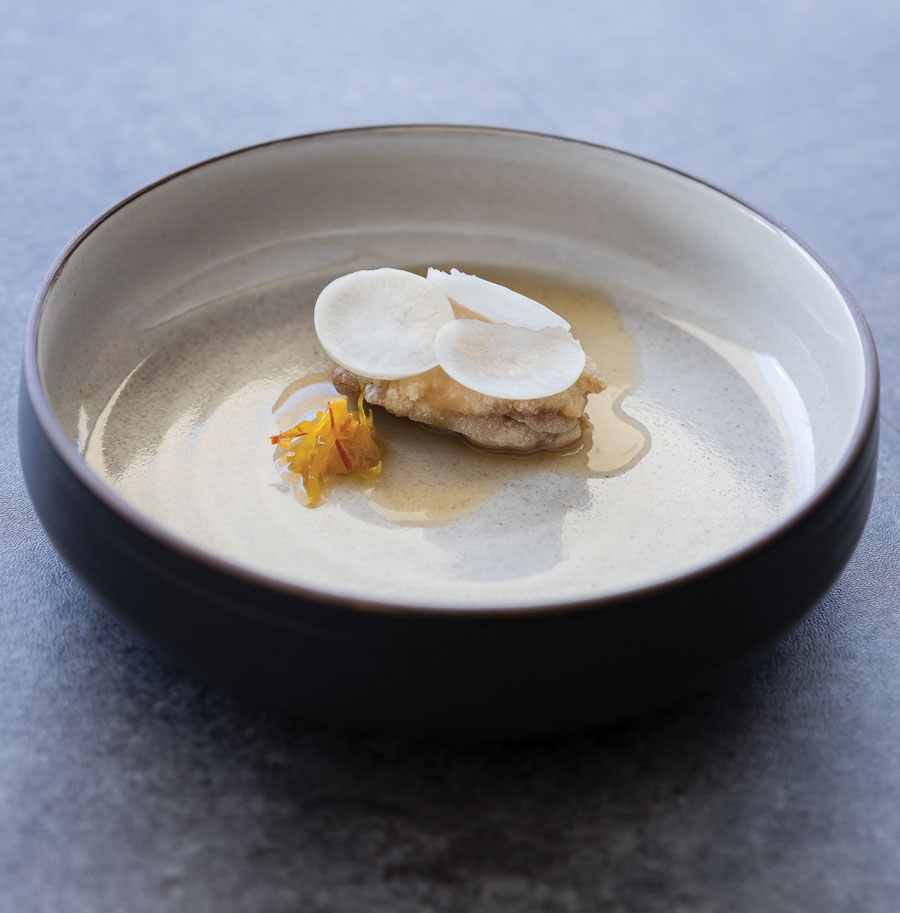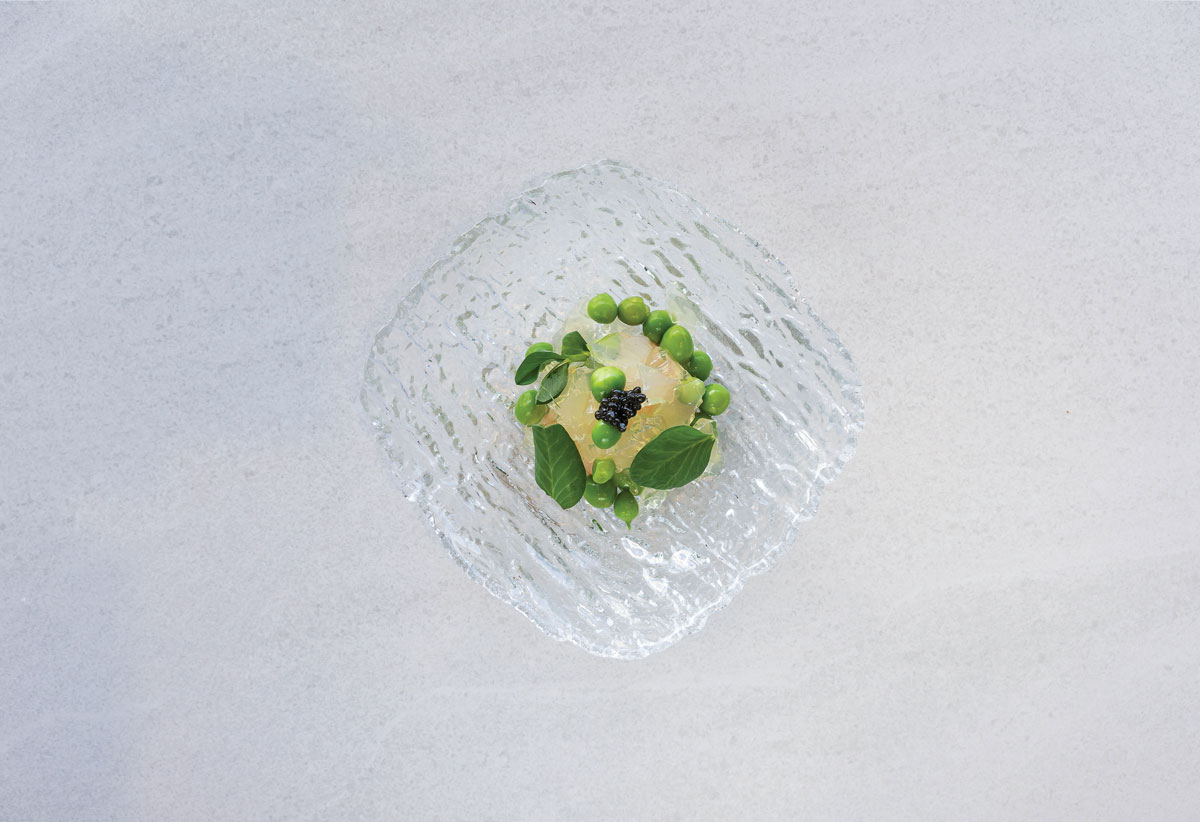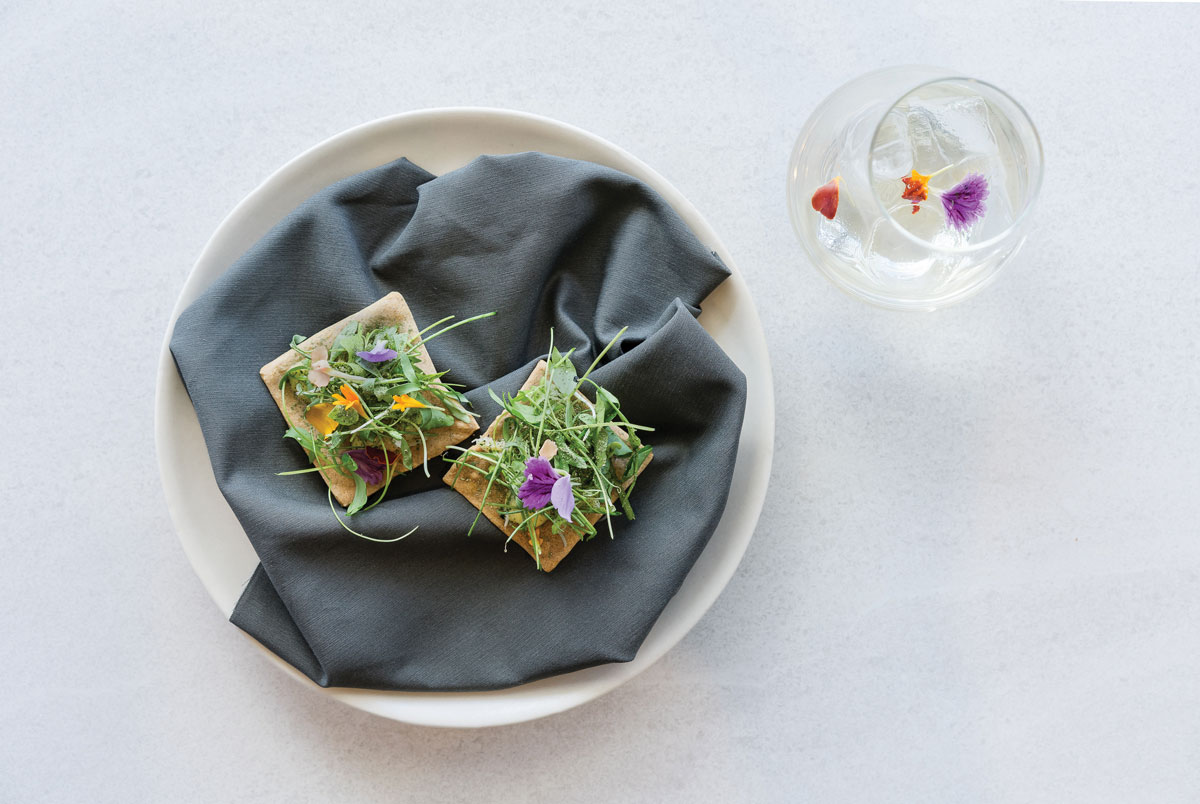
Chef John-Vincent Troiano Explains Cooking as Selfless Hospitality
Chef John-Vincent Troiano synergizes culinary traditions from the East and West, giving Toronto’s uptown guests an entirely new dining experience.
- Text by J.H. White
- Photos Courtesy of Frilu
Raised in a traditional Italian family, chef and restaurateur John-Vincent Troiano has fond memories of childhood dinners and family events, building lifelong relationships over meals that he had helped to prepare. He learned the connection between nutrition and flavour, and the family kept a garden in the backyard where they would harvest many of the ingredients for their homemade meals.
Troiano’s culinary traditions formalized once he became a chef, a career he had wanted to pursue since he was 12 years old. But instead of formalizing the type of cooking he learned in his home kitchen, he spent three years in the tutelage of Japanese master chef Masaki Hashimoto at his restaurant in Toronto.

“The most I learned from chef Hashimoto was not cooking … but selfless hospitality,” Troiano says. “The way I interpret this is making sure your guest is 150 percent content or happy or satisfied with what you’re producing, always thinking about the guest, putting the guest before yourself.”
Troiano emphasizes that selfless hospitality is not a marketing slogan; it’s an intent, a benevolent approach to service that anchors both his business and his personal life.
“If someone doesn’t like something, if someone says, ‘Oh, my water is too hot,’ you cannot take that personally. You say, ‘Oh, I understand. I will get you something cooler. I’ll add some cold water,’” he says. Sometimes people are simply having a bad day and bring that into the restaurant.
“It’s not a personal attack. You have to think almost like they’re coming into your home,” he says. Listen to them, serve them coffee or tea, be a friend and improve their day. “We overcome it pretty much by killing them with kindness.”

This ethos permeates Troiano’s first restaurant, Frilu, in the northern suburbs of the greater Toronto metropolitan area. That same benevolent service is particularly challenging at Frilu because they serve an 8–12 course tasting menu, with zero options. Diners with dietary restrictions must give a week’s notice if they require substitutions. Other than that, it’s prix fixe.
“In the beginning, it was like, ‘What’s this restaurant? And what are they trying to do? Why is there no big sign at the front?’” Troiano says with a laugh. “We’ve had evenings where people don’t get it. It’s very difficult, in 10 courses, to make sure people enjoy every course. It’s very difficult … Everyone’s flavour and taste are different.”

Difficult, but after a year and a half of seating these extravagant dinners, Troiano and his Frilu team of selfless chefs and servers have won over Toronto’s uptown foodies with elaborate menus of palate-pleasing dishes.
“We have a lot of guests, since we’ve opened, that really understand our heart. They really see that, ‘Oh wow, these people are very passionate. They have a lot of things to give,’” he says.
“People are understanding now the concept that this is like their own little place. It’s not something that everybody knows about. It’s an infectious kind of thing, because now they feel like they have a personal connection with us.”
Despite only having one menu with 10 courses, typically, that menu changes seasonally—another principle ingrained in him while growing up with traditional Italian influences and while learning Kaiseki, a strict Japanese haute cuisine.

“Most parts of Asia and most parts of Europe still eat seasonally. It’s only in North America where we eat out of season,” he says. Troiano adds that most cultures continue to source locally and make food artisanally, traditions he’s keeping alive at Frilu. Almost 90 percent of his ingredients come from local niche artisanal farms, such as the one where he gets his bison.
“Each artisanal product is very, very, very high quality, full of love and passion. So when we showcase it on the menu, we don’t have to do lots of work to it. It speaks for itself,” he says.
Fortunately, Troiano’s benevolent starting point and service at his restaurant seems to be a two-way street.
“What I really enjoy with our guests is that they trust us enough to enjoy their evening or celebrate their anniversary, celebrate their birthday, or any kind of special event. They really look forward to seeing me or seeing our staff. So, that’s something that I really enjoy,” he says.

Sakura Canelé (makes 12 canelés)
Ingredients:
500ml whole milk
45g butter
4 egg yolks
120g flour
30g cornstarch
225g sugar
40g sake
130g salted cherry blossoms
To make the cherry blossom powder:
Before starting the process, run cherry blossoms under cold running water until salt is completely removed, approx. 30 minutes. Salted cherry blossoms can be purchased at Japanese grocery markets.
Dry 10 grams of the washed cherry blossoms slowly in a 200⁰ F oven or a dehydrator until completely dry, about 10 hours.
Blend the dried blossoms to a fine powder in a coffee grinder or blender.
Chop the remaining cherry blossoms.
To make the canelés:
Heat milk and butter on medium heat to 85⁰ C, or until not quite boiling.
Pour milk and butter mixture slowly into egg yolks, whisking to temper.
Mix flour, cornstarch, and sugar together.
Pour hot egg mixture into dry ingredients and stir until smooth.
Stir in sake and chopped cherry blossoms.
Let batter rest in the fridge overnight.
Preheat oven to 400⁰ F.
Brush canelé moulds with butter or use oil spray.
Fill moulds 7mm from the top edge to allow room to rise.
Bake for 45–50 minutes, until a caramelized dark golden crust develops.
Remove from moulds. Sift or sprinkle the cherry blossom powder over the canelé tops. Enjoy!
Inspired for a Beautiful Life
Related Articles

Dancing Between Light and Shadows
Discover how wonders come alive amid Liu Wei Tsen’s masterful brushstrokes

The Iridescent Allure of Mother-of-Pearl
South Korean artist Jian Yoo creates sculptures inspired by an ancient Asian craft

Cartier’s Jewel
In the 1920s, France was experiencing its Années Folles period, when culture thrived and arts and literature took centre stage. The Lost Generation of writers, including Ernest Hemingway and F. Scott Fitzgerald, were gallivanting and meeting in salons with Gertrude Stein. Cole Porter was composing music that defined his generation, and jeweller Louis Cartier was …








